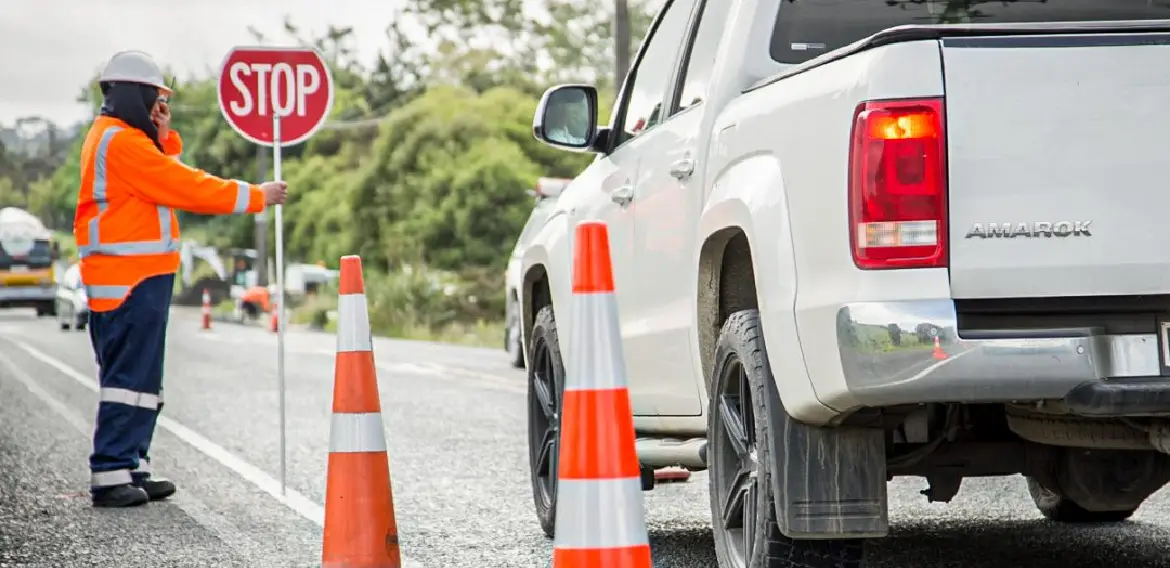Traffic Management Plans are a type of HSWA plan that details the desired flow of vehicle and pedestrian movements within the site or building. This is aimed to help PCBUs with managing traffic risks in their workplace, which then reduces the frequency of vehicle/forklift and pedestrian interactions.
Why is traffic management important in the workplace?
Companies are mandated to ensure the safety of their employees in the workplace by either eradicating or lessening hazards. In line with the Health and Safety at Work Act 2015, workers should be provided with the utmost safeguard against harm, as long as it is reasonably feasible.
In New Zealand many accidents are caused by vehicles. Therefore minimising the risks with safety controls should be a priority.
Who should be involved when managing traffic?
It’s crucial that all team members fully support and engage in workplace traffic management, as the safety of the environment largely relies on collaborative effort. Since employees are at the frontline dealing with these issues, their input in formulating solutions can be invaluable! For larger workplaces, the appointment of a health and safety representative can be beneficial for steering these discussions.
Supervisors are accountable for providing sufficient training and oversight, conducting regular workplace checks, reviewing incident reports, ensuring the provision of safe and properly maintained machinery, and addressing any recognized concerns.
Any other enterprises utilising your workspace (including shared driveways or parking zones), contractors on the premises, and the general public should be alerted about any site-specific conditions. If your operations affect public roads, make sure to consult with your local road authority for the appropriate traffic management regulations and stipulations.
A plan for managing traffic should incorporate the following aspects:
- The planned direction and progression of pedestrian and vehicle traffic.
- Guidelines detailing when and how motorists should yield or halt for pedestrians or other vehicles.
- The anticipated level of interaction between vehicles and pedestrians.
- Illustrations depicting the positioning of barriers, speed humps, speed limits, walkways, signage, and other measures intended to direct and warn traffic around or through a work area.
- Strategies for handling short term, mobile operations, and intricate traffic situations.
- Any limitations or factors due to additional regulatory requirements, such as noise or traffic volume constraints.
Additionally, a traffic management plan may encompass:
- The duties and obligations of staff handling traffic at the work site.
- The roles and responsibilities of personnel working in proximity to or within vehicles at the work site.
- The emergency protocols for directing traffic.
Some other aspects you should consider are:
Pedestrian-Vehicle Segregation: Ensuring pedestrian safety can be accomplished through the use of barriers, bollards (available in both steel and flexible options), and the establishment of distinct pathways via painted lines.
Clearly Marked Vehicle Routes: The course a vehicle navigates around your premises should be well maintained and clearly marked with signs indicating speed restrictions, speed calming measures, and loading/unloading zones.
Use of Personal Protective Equipment (PPE): Employees working in high-traffic areas should don high-visibility apparel and suitable footwear. Keeping additional gear on hand for visitor use is also recommended.
Designated Pedestrian Crossings: Should pedestrians need to cross a vehicle operational area, a designated crossing should be implemented to manage the risk. This can include road markings, gates, traffic signals, barriers, or railings.
Safe Parking Zones: Parking spaces for staff and visitors should be situated away from busy work zones, connected to clearly demarcated pedestrian pathways, shielded by wheel stops, and visibly signposted. As a safety measure, vehicles should be parked in reverse whenever possible.
Signage and Road Markings: Consider the experience of first-time visitors to your facility. Would they be able to locate the reception, restrooms, parking, or first aid equipment easily? Use signs to guide pedestrians and drivers towards cautionary measures such as speed limits, drop-off zones, vehicle crossings, and to highlight potential hazards. Anti-slip stair nosings can prevent tripping on steps, and safety mirrors can be positioned at blind corners and areas where forklifts operate.
Illuminated Areas: Proper lighting is essential for visibility. Both vehicle and pedestrian routes need to be well illuminated, and significant variations in light intensity between areas should be minimized.
Safety Measures for Reversing Vehicles: Reversing should ideally be avoided by implementing a one-way traffic flow. If necessary, safety measures such as mirrors, reversing cameras, audible reverse alarms, sensors, corner protectors can be utilized. Non-essential personnel should be kept out of the area, and everyone present (including spotters) should wear high-visibility clothing.
Restricted Areas: These are high-risk zones within the workplace, accessible only to certain personnel. Belts, barriers, and fences can mark these areas as off-limits. Modern flexible barriers that remain highly visible can also be used, reducing repair and maintenance costs.
Once you’ve got a Traffic Management Plan, regular surveillance and review is crucial to ensure their continued effectiveness and to adapt to any modifications at the work site. A thorough review should be conducted following any incidents, including near-misses. Workers should be informed promptly of any alterations to the plan.
Professional advice for developing a traffic management plan that meets the unique needs of your work site, vehicles, and work activities can be sought from traffic management consultants like traffic planners or traffic engineers.
Our team specialises in creating Traffic Management Plans that are compliant and approved. contact us today to discuss your requirements.
Author: Mark Davis.

